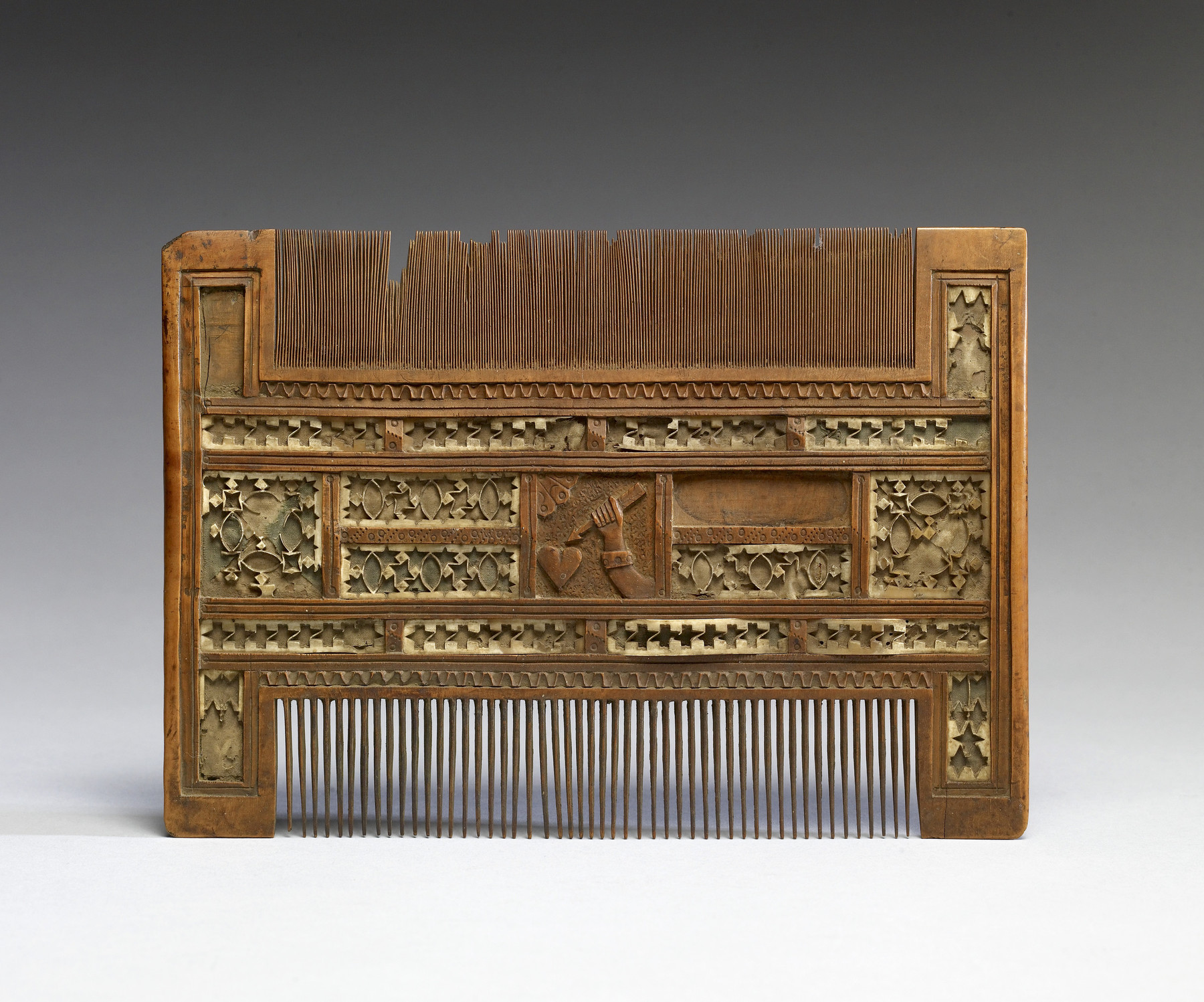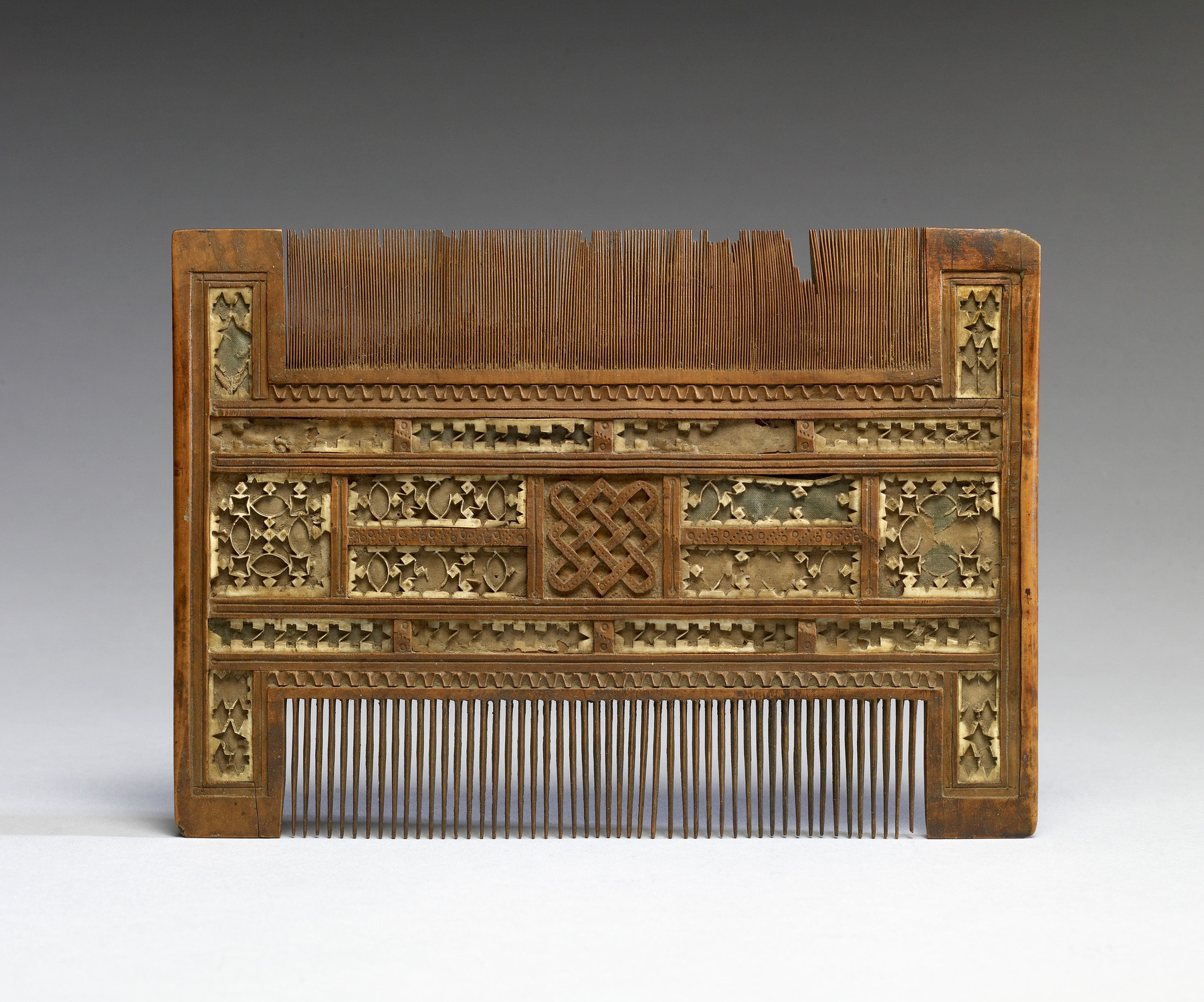Comb
(Renaissance Europe )
Combs were essential articles of toiletry for both men and women, used for styling the hair as well as to remove lice and nits; luxury combs such as this one were status symbols. This example is made of boxwood and decorated with pierced latticework panels of bone mounted over colored silk. Boxwood has a dense, interlocking grain that allows for very fine carving; it was the medium of choice for small, elaborate objects. When cut along the grain, boxwood is extraordinarily resistant to splitting or chipping and appropriate for the fine teeth of a comb. Richly decorated boxwood combs became common in the sixteenth century, when they seem to have supplanted ivory combs.
Combs were often exchanged as love tokens, and many have inscriptions or iconography that pertain to the theme of love. The central panel shows a hand holding an arrow and transfixing a heart. The motif is not unique, appearing, for example, in a comb in the Musée de Cluny, Paris (Cl. 21279). The motif of the transfixed heart appears frequently in courtly literature, derived from Ovid’s description in his Metamorphoses (1:466) of Cupid taking aim at Apollo’s heart with a golden arrow to excite his love for Daphne, whose love Cupid had snuffed with a lead arrow. Following the classical source, medieval poets adopted the theme of the transfixed heart as a symbol of the pain and suffering of unrequited love.
Provenance
Provenance (from the French provenir, 'to come from/forth') is the chronology of the ownership, custody, or location of a historical object. Learn more about provenance at the Walters.
Acquired by Henry Walters, Baltimore; by bequest to Walters Art Museum, 1931.
Exhibitions
| 2016-2017 | A Feast for the Senses: Art and Experience in Medieval Europe. The Walters Art Museum, Baltimore; The John and Mable Ringling Museum of Art, Sarasota. |
Conservation
| Date | Description | Narrative |
|---|---|---|
| 1/15/1962 | Treatment | cleaned |
| 12/8/2015 | Treatment | cleaned |
Geographies
France (Place of Origin)
Measurements
H: 5 1/2 × W: 7 13/16 × D: 7/16 in. (14 × 19.8 × 1.1 cm)
Credit Line
Acquired by Henry Walters
Location in Museum
Not on view
Accession Number
In libraries, galleries, museums, and archives, an accession number is a unique identifier assigned to each object in the collection.
In libraries, galleries, museums, and archives, an accession number is a unique identifier assigned to each object in the collection.
61.69




